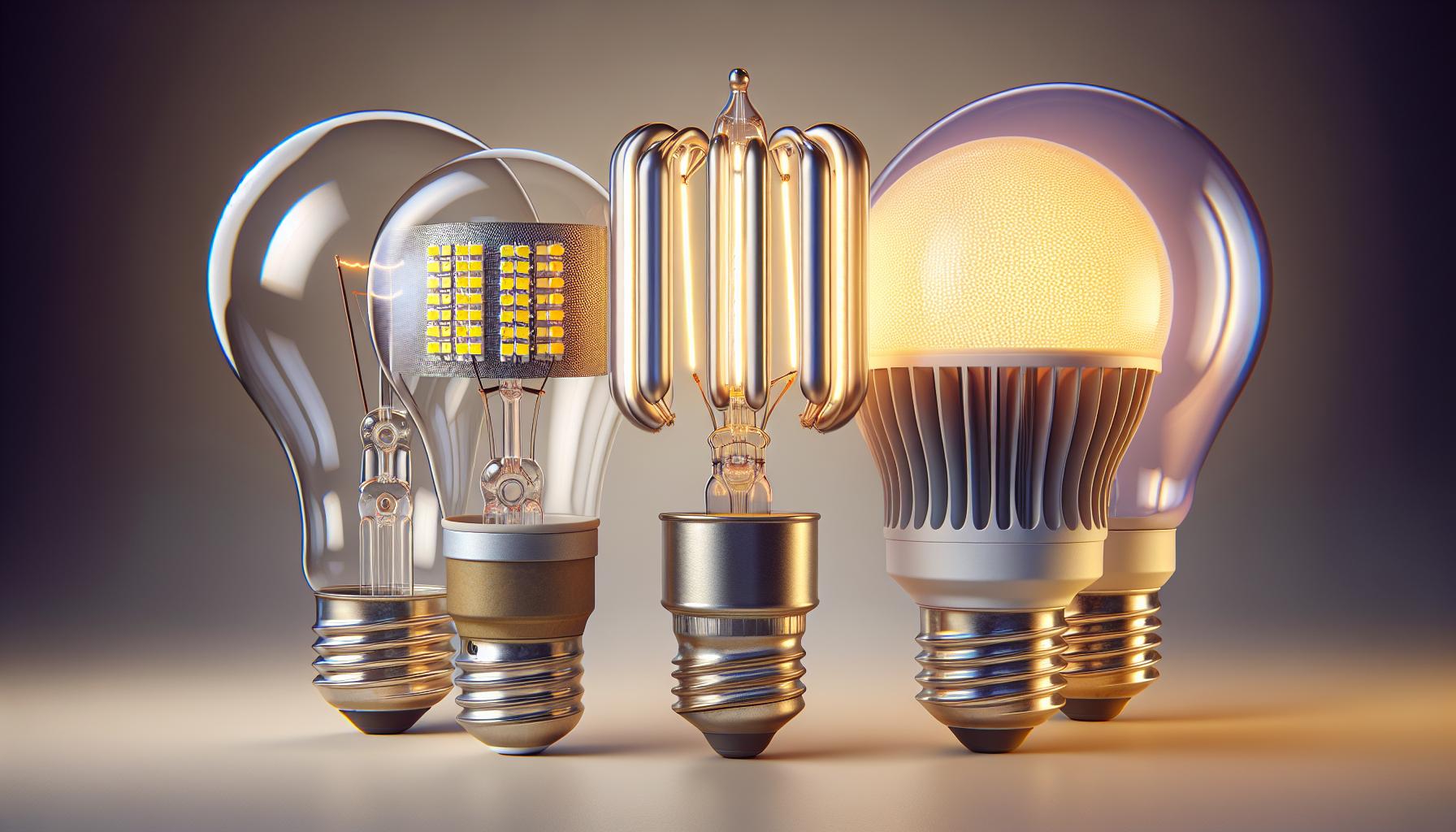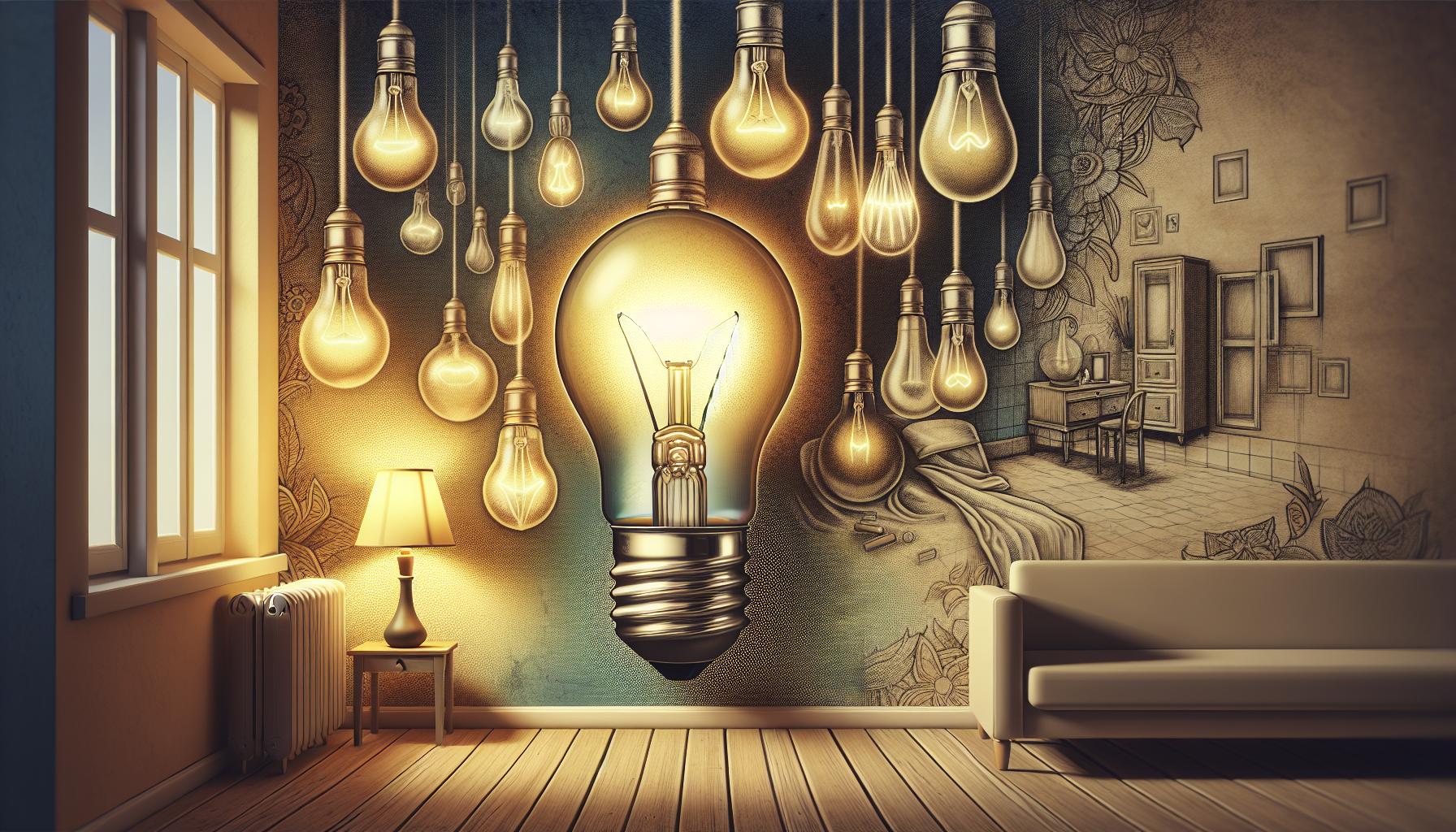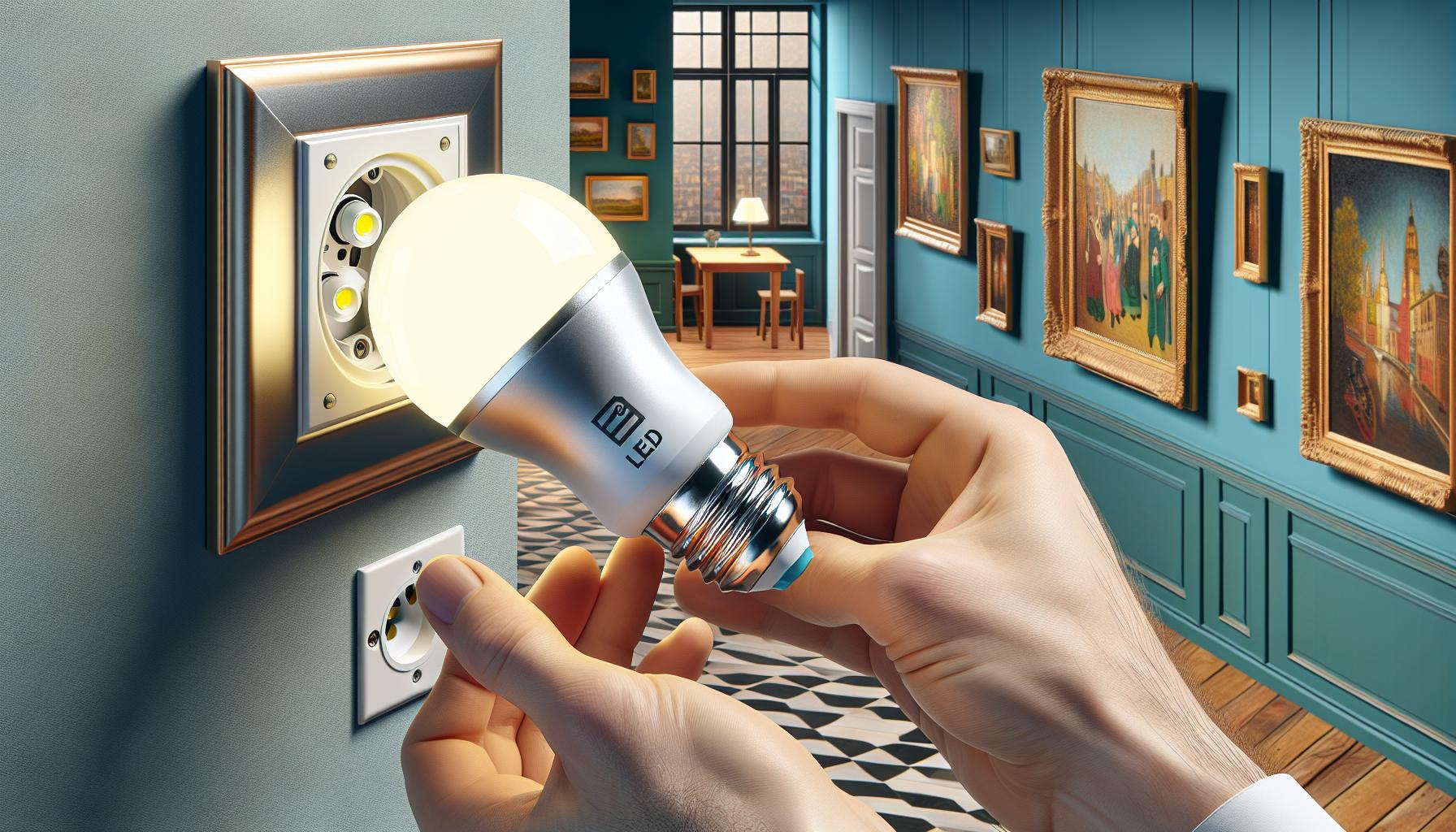Ever found yourself wondering why your light bulbs seem to burn out faster than a shooting star fades from the night sky? You’re not alone. It’s a common household gripe that can leave you scratching your head and your wallet a little lighter.

From the flick of the switch to the dimming glow, there’s a science behind why these bright little wonders don’t always stick around as long as you’d like. Let’s shed some light on the mystery and uncover the reasons behind their untimely demise.
Reasons behind light bulbs burning out quickly
As you dive deeper into the enigmatic life of light bulbs, you’ll uncover a series of factors that contribute to their premature failure. Exploring these reasons isn’t just about satisfying curiosity; it’s about equipping yourself with the knowledge to make better choices for your home’s lighting.
High Voltage Stress
Electricity isn’t always as steady as you’d hope. Surges of high voltage are particularly notorious for shortening the life span of your beloved bulbs. Even a slight increase in voltage can have a significant impact on how long they last.
Table: Effect of Voltage Increase on Bulb Life
| Voltage Increase (%) | Life Decrease (%) |
|---|---|
| 5 | 50 |
| 10 | 75 |
| 20 | 95 |
Frequent On-and-Off Cycles
Your daily routine, which often involves flicking lights on and off, might be more damaging than you think. The thermal stress from these cycles weakens the filament over time, leading to an untimely end.
- Poor Quality Components
You get what you pay for, and this is especially true with light bulbs. Cheaper options often use lower quality filaments and materials which can lead to a shortened lifespan. Investing a bit more upfront can lead to significant savings down the line.
Excessive Vibrations
Ever notice how the bulb in your garage door opener seems to go out more often than the rest? That’s due to the vibrations caused by the opening and closing of the door. The same goes for any bulb in an area with high foot traffic or near heavy machinery.
- Incompatible Dimmer Switches
Pairing modern bulbs with outdated or incompatible dimmer switches is a recipe for disaster. Modern LED bulbs require compatible dimmers to regulate the power flow properly. Without this, your bulbs could be experiencing stress that leads to their downfall.
Recognizing these factors is your first step toward longer-lasting lighting solutions. Armed with this knowledge, you’re now better prepared to tackle the battle against bulb burnout in your home DIY lighting projects.
The science behind light bulb lifespan

Diving deeper into the heart of the matter, light bulb longevity is rooted in the science of how they’re designed and how they produce light. Let’s shed some light on the finer details.
Filament Fatigue: Incandescent Troubles
« Is It Okay to Touch Light Bulbs? Safe Handling Tips Revealed
Why Light Bulbs Are Key to Home Ambiance and Well-Being »
If you’re fond of the warm glow from an incandescent bulb, you’re also familiar with its Achilles heel – the filament. These filaments, typically made of tungsten, face extreme stress as they heat up and cool down, eventually leading to what’s known as filament fatigue. With each cycle, the filament becomes more brittle until it breaks. That’s why your cozy bedroom light might not make it past a few months of regular use.
LED Degradation: A Slower Fade
LEDs, although more durable, aren’t immune to wear and tear. They don’t suffer from the same filament issues, but they do experience lumen depreciation – a fancy term for the gradual decrease in brightness over time. To keep it simple, the semiconductor materials within LEDs can degrade, particularly if they’re exposed to high temperatures regularly, a common issue if they’re not fitted with a proper heat sink.
Compact Fluorescent Lamps (CFLs) and Their Quirks
Your eco-friendly CFLs operate differently. These involve a gas and a phosphor coating inside the bulb. When you hit the switch, an electric current runs through the gas, causing it to emit ultraviolet light. This light then hits the phosphor coating, which in turn creates visible light. Sounds amazing, right? Unfortunately, this intricate dance can be disrupted by various factors such as quality of the components, excessive vibration, and the ever-annoying on-and-off cycling.
It’s your job as a DIY aficionado and lighting connoisseur to recognize the complexity of each bulb type to maximize its lifespan in your projects. By understanding the various failure modes whether it’s thermal stress or material degradation, you’ll be able to select the right bulb for each location and set-up in your house. From the choice of lights for your rattling garage door opener to the peaceful ambiance of your reading nook, every decision should be illuminated by the science behind these illuminating companions.
Factors that contribute to shorter bulb lifespan

As you’re perusing the aisles for the perfect bulb, you’re probably not thinking about what could cut its life short. Yet, understanding these factors can be a game changer. Let’s illuminate some of the not-so-obvious reasons bulbs can fail before their time.
First up, inferior bulb quality. Just like any product, not all bulbs are made equal. Low-cost options might seem appealing, but they often use subpar materials that can’t stand the test of time—or voltage. You get what you pay for, and with cheap bulbs, you’re often paying for a shorter lifespan.
Then there’s improper use. Are you using that bulb as intended? Plugging a non-dimmable bulb into a dimmer circuit is like forcing a square peg into a round hole—it just doesn’t work right. Each bulb is designed with a specific purpose in mind, so make sure you’re matching the bulb to the job.
Heat buildup is another culprit. We tend to cram bulbs into enclosed fixtures without a second thought. But the poor things get hot, and without proper ventilation, heat accelerates the degradation of sensitive internal components. Always check if your bulb’s suited for that snug space you’ve got in mind.
Lastly, don’t overlook power surges. They’re the silent killers of the electrical world. Even small surges can weaken your bulb over time, and big ones can be instant lights-out. Surge protectors aren’t just for computers; consider them for your lighting fixtures as well to protect your bulb’s lifespan.
- Quick Recap:
- Avoid cheap, low-quality bulbs.
- Match bulbs with their intended usage.
- Ensure adequate ventilation for heat dispersion.
- Protect against power surges where possible.
By keeping these pointers in mind, you’ll not only save yourself the nuisance of frequent replacements but also enjoy the full glow of your lighting efforts. Now let’s delve into how you can mitigate these factors and extend the life of your bulbs even further.
Common mistakes that shorten light bulb lifespan

As a savvy DIY enthusiast and lighting aficionado, you’re well aware that the devil is in the details. But sometimes, despite your best efforts, those details can slip through the cracks. When it comes to light bulb lifespan, some common slip-ups can inadvertently truncate your bulb’s shining moments.
Overlooking the Fixture Compatibility
First up, pairing your bulb with an incompatible fixture is like fitting a square peg in a round hole – it’s a no-go. Bulbs designed for open fixtures might not live up to their full potential in an enclosed one, leading to excessive heat and ultimately, a premature exit from the stage of illumination.
Ignoring Ambient Temperature
Your bulb’s ambient temperature is its comfort zone. Stray too far from it, and you’re asking for trouble. For instance, placing indoor bulbs outdoors where temperatures can dip or soar spells out a recipe for a dimmer lifespan. Keep an eye on those ambient temperature recommendations on the packaging – they’re there for a reason.
Neglecting Regular Cleaning
Remember, a clean bulb is a happy bulb. Dust and dirt might not seem like archenemies, but they cut down on efficiency and lead to overheating. Ensure your bulbs are switched off and cool to the touch, then give them a gentle wipe-down with a soft cloth. Your bulbs will thank you with a brighter and longer life.
Don’t let these common missteps dim your bulbs’ performance. With your passion for home DIY projects and a bit of insider know-how, you’ll keep the lights on stronger and longer. Always cross-check your specifics and remember, the small shifts in how you treat your light bulbs can make all the difference in their longevity. Keep this in mind on your next lighting project, and watch your well-lit spaces glow with both brilliance and endurance.
Conclusion
So there you have it! You’re now equipped with the knowledge to keep your light bulbs shining bright for longer. Remember, a little awareness goes a long way. Pay attention to the quality of the bulbs you buy, how you use them, and the conditions they’re in. With the right care and a bit of know-how, you’ll not only save yourself the nuisance of frequent changes but also keep your home aglow with that perfect light. Here’s to a brighter, longer-lasting luminescence in your space!
Frequently Asked Questions
What factors contribute to a shorter light bulb lifespan?
Poor bulb quality, incorrect usage, heat buildup, power surges, using bulbs in incompatible fixtures, not considering ambient temperature, and lack of regular cleaning can all lead to a reduced light bulb lifespan.
How can I extend the lifespan of my light bulbs?
To extend your light bulbs’ life, choose high-quality bulbs, use them as intended, ensure proper fixture compatibility, minimize exposure to high temperatures and power surges, consider the ambient temperature, and clean them regularly.
Does using a light bulb in an incompatible fixture affect its lifespan?
Yes, using a light bulb in an incompatible fixture can cause heat to build up more than the bulb is designed to handle, which can significantly shorten its lifespan.
Can ambient temperature affect light bulb longevity?
Ambient temperature can influence light bulb longevity; bulbs operating in very high or low temperatures may have reduced lifespans. It’s important to choose bulbs that are rated for the operating temperature they’ll be used in.
Why is regular cleaning important for light bulb longevity?
Regular cleaning removes dust and dirt accumulation that can lead to overheating and, therefore, can significantly extend the life of your light bulbs.




